https://www.alibaba.com/product-detail/12-7mmx920M-Black-Inked-Ribbon-Inked_1600231049141.html
Bulk manufacturer of typewriter ribbon
https://www.alibaba.com/product-detail/12-7mmx920M-Black-Inked-Ribbon-Inked_1600231049141.html
Bulk manufacturer of typewriter ribbon
https://www.instagram.com/p/DQWrYUPDsrv/?hl=en
Gloria Steinem was using a Memindex in 1960!
You know a typewriter is being used as flimsy filler decoration when it's sitting on a shelf and simultaneously serving as a book support. [38:33]
A real writer's typewriter is free and clear so that the carriage can move its full length.
https://www.reddit.com/r/typewriters/comments/1oouq6o/chrome_typewriters/
Gold plated machines: - Royal Quiet De Luxes - Olympia SM3
Most of the rest of the machines out there were aftermarket cleaning and restoration related work.
Marketing:<br /> The Corona was one of a number that were plated in 24 K gold for a Luis Vuitton marketing campaign
Off-label uses for linewinders as typewriter ribbon winders?
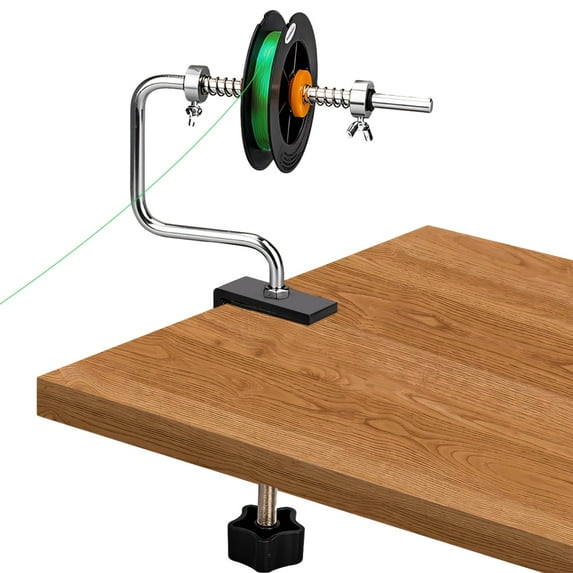
https://discord.com/channels/639936208734126107/639938983220215828/1131197256691875881
The Marvelous Mrs. Maisel S5, E2
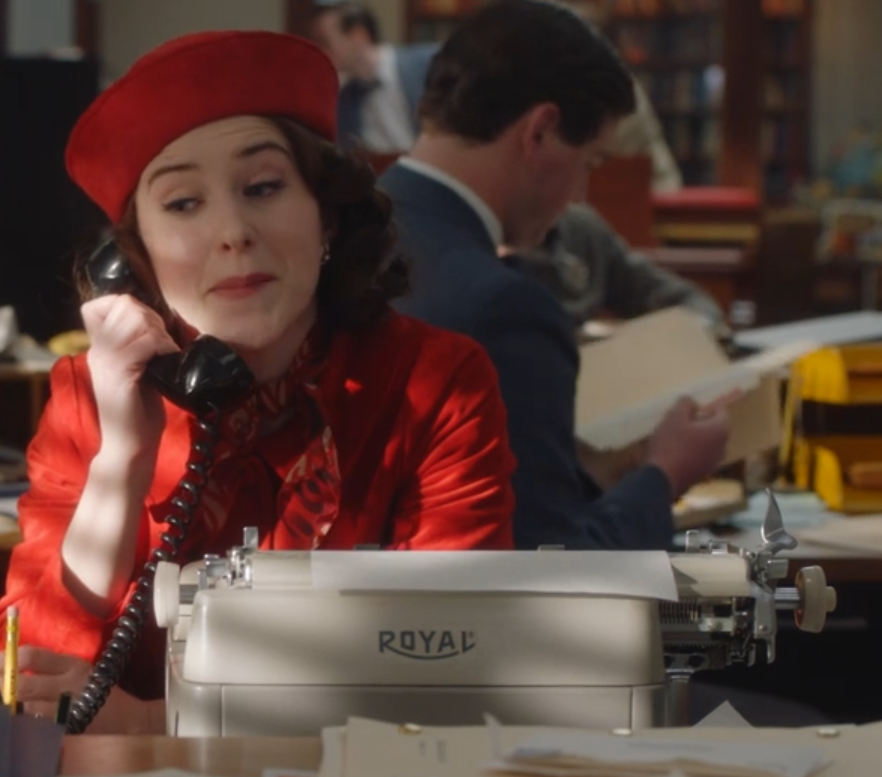
“Letters by radio”, Science and Invention, (Artist Unknown) 1922<br />
https://www.reddit.com/r/typewriters/comments/1o8lzdm/trying_to_id_a_typewriter_from_a_video_game/
Folklore (2007, PlayStation 3)

https://www.reddit.com/r/typewriters/comments/1o8o98j/comment/njx2pgo/?context=1
Haul Out the Halloween (2025), Hallmark Movie

UPDATED Watch Woody Allen's Interview with Bill Maher: "Sunset Boulevard" (the Movie) is "Fun Junk," "Streetcar" is "Perfect" - Showbiz411<br /> by [[Roger Friedman]]<br /> accessed on 2025-10-22T10:20:51
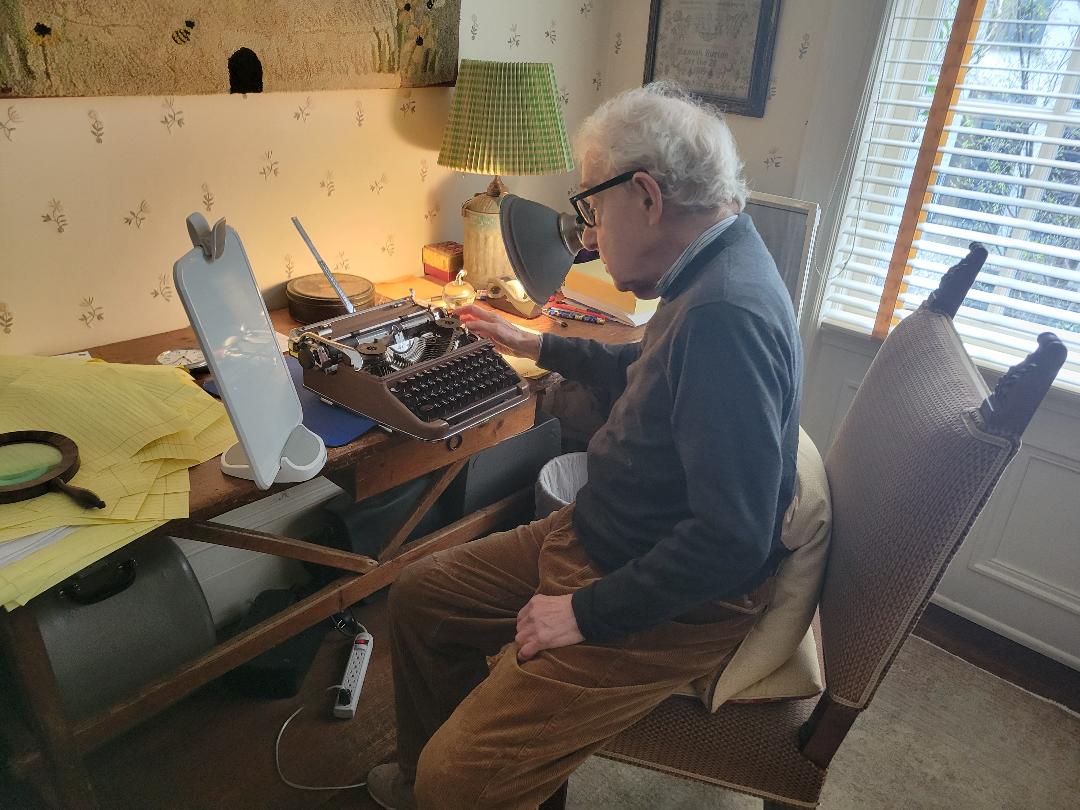
"Use Work-Organizers" advertisement, Bookseller & Stationer and Office Equipment Journal, Toronto, October 1920, Vol XXXVI, No. 10, p70.
Photo of a work organizer for indexing/filing on both a desktop as well as within the desk drawer.
https://www.ribbonsunlimited.com/1-2-Replacement-Uninked-Typewriter-Ribbon-s/12848.htm
Uninked typewriter ribbon in silk, nylon, and cotton.
https://www.reddit.com/r/typewriters/comments/1kjam1u/ribbon_material_makes_a_big_difference/
Cotton versus nylon on an Olympia SM9

Finding a Typewriter's Serial Number<br /> by [[Robert Messenger]]<br /> accessed on 2025-09-18T20:48:00
 <br />
page from Wilf Beeching's Century of the Typewriter (1974 edition)
<br />
page from Wilf Beeching's Century of the Typewriter (1974 edition)
reply to u/BudgetSprinkles3689 at https://www.reddit.com/r/typewriters/comments/1nkbw85/serial_number_location/
What is the purpose of a serial number? What does it do for you? There are serial numbers on things all around you; do you know where all of those are? The VIN number on your vehicle maybe?
People now are only using them to approximate manufacturing dates for fun, but they were generally only used by the factory or repair people to identify specific machines and/or tie issues after manufacture back to production line problems. Do they need to be easily accessed or visible for these purposes? The people who really need them generally know exactly where they are and how to find them.
Sometimes they're used to create inventories for owners or in cases of theft, but these generally aren't common uses that need high visibility. Because they can be removed or defaced, should they be put in easily findable and accessible places?
Generally they're stamped in at the factory during production on integral parts of the machine during assembly. As a result, they can often be hidden or covered up by parts (especially exterior panels and body styling) added later. If it's on an exterior, easy-to-remove part, what good is it?
If it helps, here's a diagram of some common locations:

https://www.etsy.com/listing/1505097692/antique-1921-meads-file-index-corrective<br /> Antique 1921 Mead's File Index Corrective Diets Infants Nursing Weight Charts Mead card index geared toward health of infants with details, nursing patterns, growth data, feeding data, case history, etc.
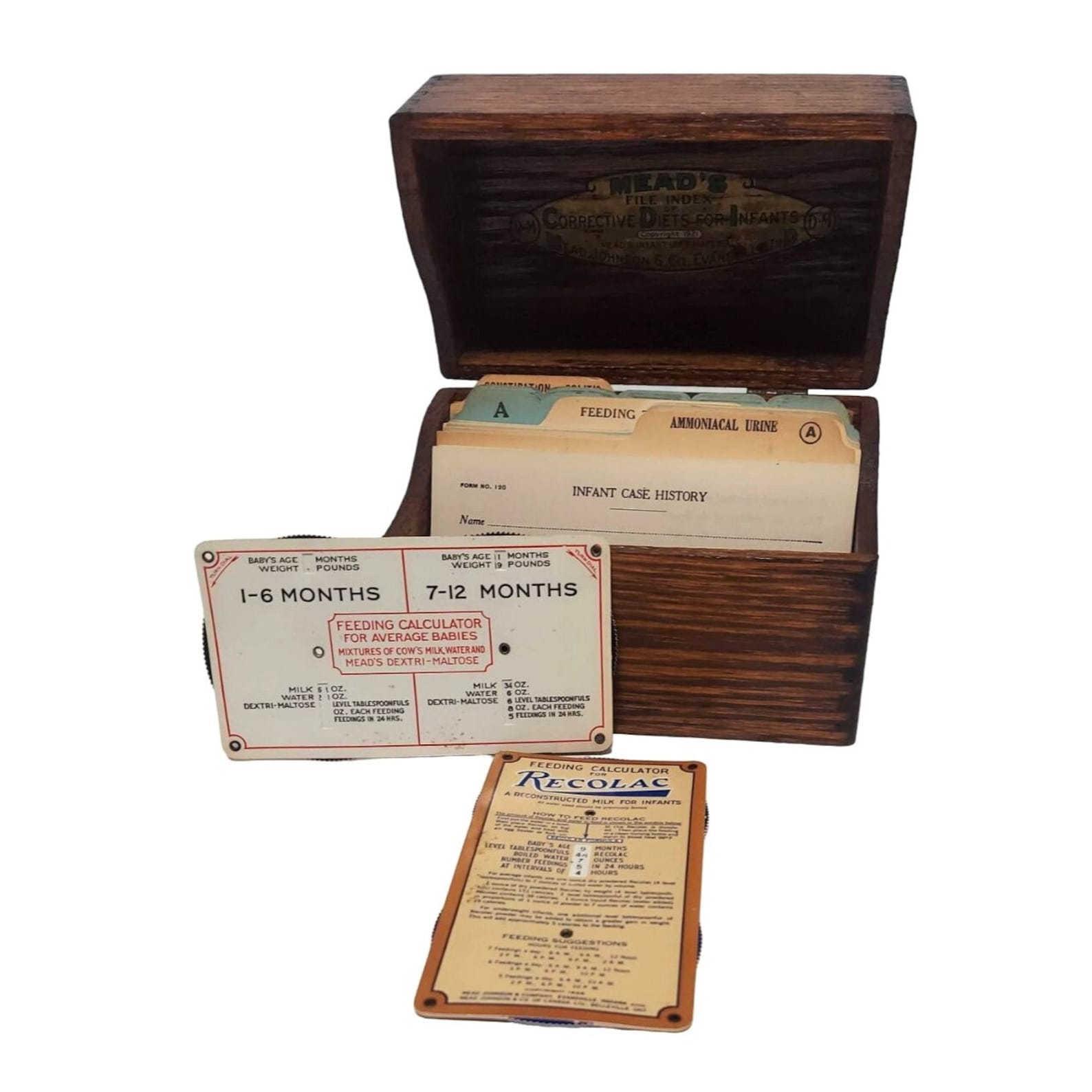
Reply to Joe Van Cleave at https://typewriterdatabase.com/show.21270.typewriter
It's probably a subtle difference, but is this machine provide the standard 6 lines per vertical inch or due to the taller ascenders/descenders is it a 4 lines per vertical inch machine?
If you need a "name" for this machine, I might suggest "Satchmo". In doing some research on Louis Armstrong's 5 series Smith Corona, I'm pretty sure his 5 series also had this same vertical script. None of the features on any of the photos I could find of his machine are subtle enough to distinguish which particular model of Smith-Corona he was using. If we find a good direct photo of the machine itself, I'm sure I could puzzle out which version he used. By 1955 he had at least one machine with a script face (see: https://www.louisarmstronghouse.org/virtual-exhibits/my-fifty-fifth-birthday-celebration-happy-birthday-louis-armstrong/). It doesn't appear to be Smith-Corona's common Script (Artistic) No. 75 , but more like Script No. 46. Based on a version of this photo (https://www.usatoday.com/gcdn/presto/2019/07/15/USAT/d815dddc-c0b8-4c54-b9b5-719886d4a0cc-02_Armstrong_Louis_16.jpg?width=1292&height=1320&fit=crop&format=pjpg&auto=webp) it would seem that it's the Smith-Corona that was the script machine (as opposed to his earlier Remington).
According to Ted Munk's post on the S-C Vertical script: "Smith Corona is offering the [vertical] typeface as 'Script No. 46', 10 Pitch by 1954."
Joe's video of his 1952 Smith-Corona this with the same vertical script https://www.youtube.com/watch?v=EH6mwmoN_LI
See also: https://www.reddit.com/r/typewriters/comments/1mo4wbg/what_typewriter/
Somewhat interesting that Louis Armstrong played cornet, wrote on a Smith-Corona, and lived in the Corona neighborhood of Queens, NY.
It came in a nice condition, black leatherette-covered hard wooden case, with the original brush, an owner's manual in French, a typing instruction booklet in English and a cardboard "instant typing chart" made to fit between the 3rd and 4th rows of keys in order to help in learning the touch-typing method.
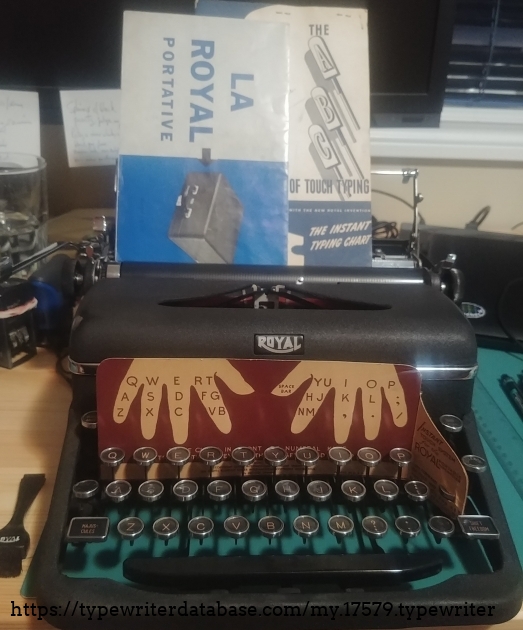
It is a beautiful blue SG 1 equipped with the special wide feet for an extra-wide 620 mm or 880 mm platen.
https://typewriterdatabase.com/1963-olympia-sg1.16258.typewriter
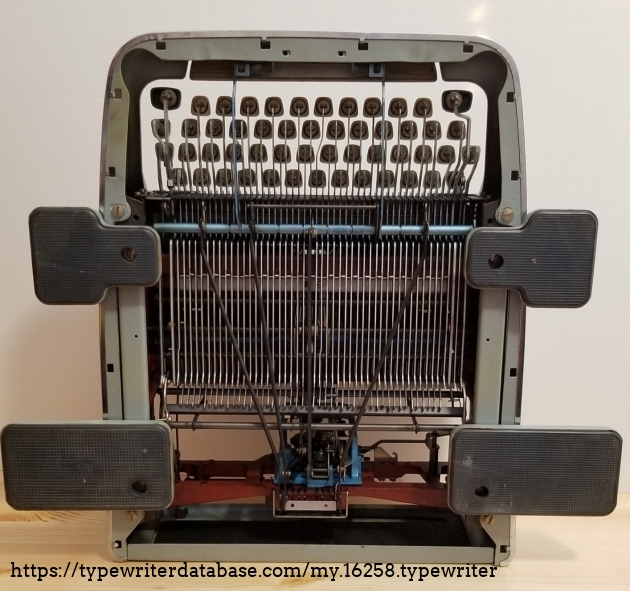
Wide feet for large platens on a heavy standard typewriter!
https://www.facebook.com/groups/705152958470148/posts/1013993200919454/

Royal X typewriter in Tintin in America
https://clickamericana.com/topics/science-technology/vintage-portable-manual-typewriters
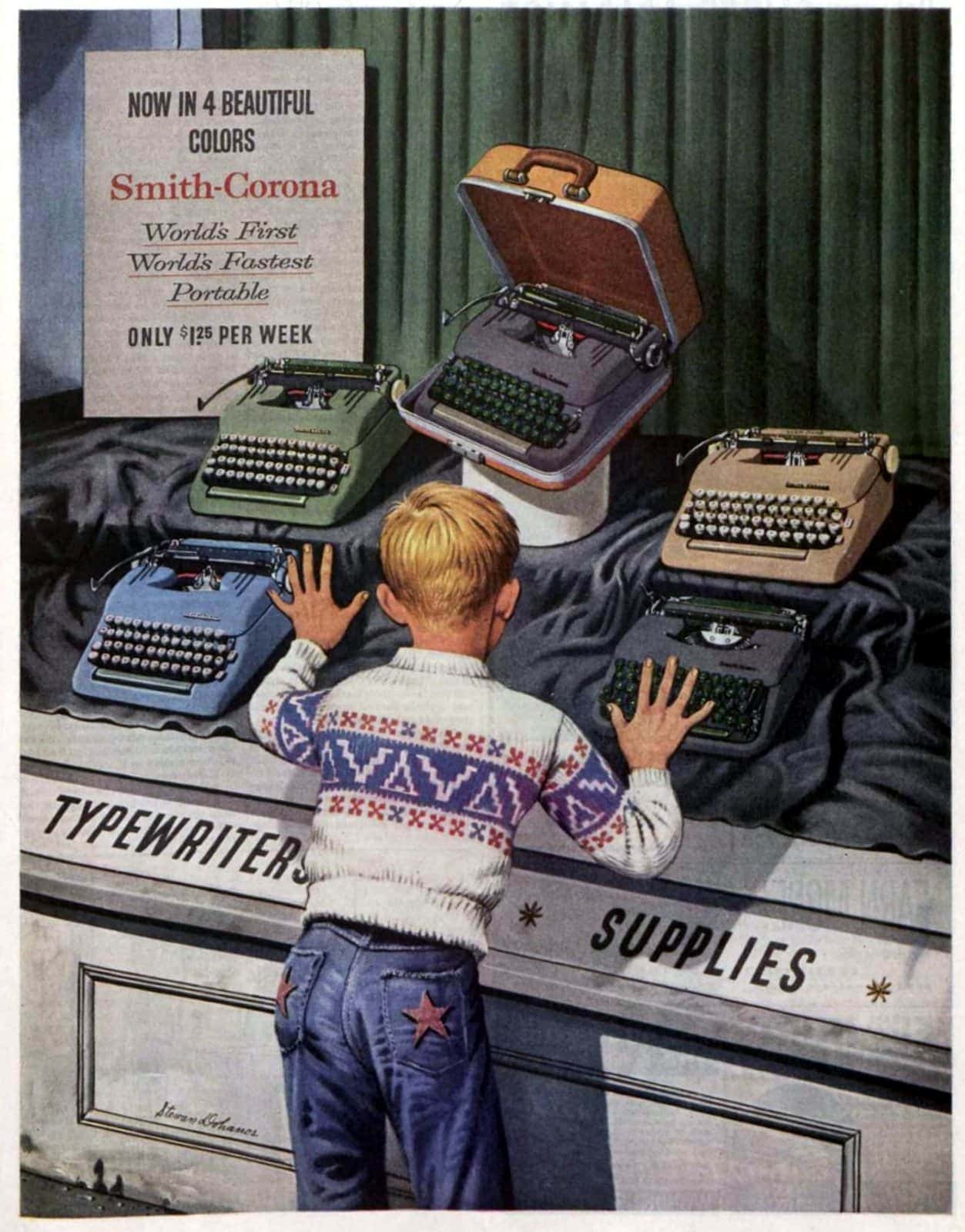
The Smith-Coronas were offered in 4 different colors.

The Remington Quiet-Riter was eventually offered in white sand, desert sage, mist green, and French gray,

The Royal HH was offered in 6 colors including green, pink, and blue. Brown was the most ubiquitous.
Wife of Pomp Hall, Negro tenant farmer, writing on typewriter. Through union activities this family has developed a desire for higher education. This typewriter is to them a symbol of that education and as such is the most prized family possession

 Illustration by Beppe Giacobbe
Illustration by Beppe Giacobbe
Harper's Magazine, April 2022, page 26 https://harpers.org/archive/2022/04/
I particularly like Austin Typewriter, Ink.'s coat of arms for underlining this point: <image>
Another fun photo of "linked" strings wrapped around a library card catalog representing the links between ideas within a paper database.
fun photo of "linked" strings wrapped around a library card catalog representing the links between ideas within a paper database.
The Pen Tool in Photoshop is a game-changer for eCommerce brands. Learn how to master it with our easy-to-follow guide.
🔗 https://pathedits.com/blogs/tips/how-use-pen-tool-photoshop-beginner-tutorial
Russian-born American author Vladimir Nabokov (1899 - 1977) dictates from notecards while his wife Vera (nee Slonim, 1902 - 1991 types on a manual typewriter, Ithaca, New York, 1958. Carl Mydans / Getty Images
:max_bytes(150000):strip_icc():format(webp)/the-nabakovs-at-work-96793854-468f6ab40e914e45abdd1542fa370872.jpg)
https://site.xavier.edu/polt/typewriters/nabokov.jpeg via https://site.xavier.edu/polt/typewriters/typers.html

This photo, similar to others in the Carl Mydans series for LIFE Magazine is surely from his September 1958 photo series, though I couldn't find an original from the LIFE archive.
Nabokov, reading off of index cards in his zettelkasten, dictates to his wife Vera who is typing on what appears to be a 1949 or 1950 Henry Dreyfuss Royal Quiet De Luxe typewriter.
Notice metal strip on the back of the typewriter with small rectangular blocks. This is the Royal's tabulator set up which distinguishes the Quiet De Luxe model from the Arrow model.
The body styling of this typewriter changed in 1950 from Dreyfuss' original 1948 design. Because it's light gray it has to be from '49 or '50 as the '48 original was a black body with dark gray highlights and didn't have chrome across the front as this one does in an alternate angle.
https://images.google.com/hosted/life/2bff56953d14c9d9.html
Nabokov, reflected in a mirror off camera, dictating his writing from index cards to his wife Vera who is typing on what appears to be a 1949 or 1950 Henry Dreyfuss Royal Quiet De Luxe typewriter.
Notice the chrome on the front of the machine which is sitting in its bottom case shell.
https://images.google.com/hosted/life/c835f121c2b6ce79.html
Nabokov dictating his writing from index cards to his wife Vera who is typing on what appears to be a 1949 or 1950 Henry Dreyfuss Royal Quiet De Luxe typewriter.
https://images.google.com/hosted/life/8d0b2f02ac27973e.html
Nabokov dictating his writing from index cards to his wife Vera who is typing on what appears to be a 1949 or 1950 Henry Dreyfuss Royal Quiet De Luxe typewriter.
Uladimir Nabokov Ithaca, New YorkDate taken:1958Photographer:Carl Mydans
Alternate angle at http://images.google.com/hosted/life/81b7b3f24bbe1b3a.html
Author Vladimir Nabokov's doodlings.Location:Ithaca, NY, USDate taken:September 1958Photographer:Carl Mydans
Author Vladimir Nabokov's researched materials on file cards for his book 'Lolita'.Location:Ithaca, NY, USDate taken:September 1958Photographer:Carl Mydans
Author Vladimir Nabokov at work, writing on index cards in his car.Location:Ithaca, NY, USDate taken:September 1958Photographer:Carl MydansSize:1280 x 889 pixels (17.8 x 12.3 inches)
Nabokov’s working notecards for “Lolita.”
Nabokov used index cards for his research and writing. In one index card for research on Lolita, he creates a "weight-heigh-age table for girls of school age" to be able to specify Lolita's measurements. He also researched the Colt catalog of 1940 to get gun specifications to make those small points realistic in his writing.


Rolodex Item #67380 https://www.ebay.com/itm/166733559184
You have to appreciate the way that this zettelkasten is designed to be decorative and include personal family photos almost as a representation of what it directly contains.
 Caption: A small rolodex file in grey and black plastic with a picture frame on the front with space for a small photo, in this case either a picture of a young child or a family dog
Caption: A small rolodex file in grey and black plastic with a picture frame on the front with space for a small photo, in this case either a picture of a young child or a family dog
How to find all the media not in an album in Apple Photos
How to have an inbox in Apple Photos?
Bought a photo printer so he could include images and photos in his zettelkasten
Kasparyan's zettelkasten consists of 24 wooden boxes and at least two plastic trays of cards. The trays are numbered and the highest numbered tray has the number 34 on it.
In the picture are two plastic trays, but it's not obvious how big they are or how many cards they may contain.
Approximating that these would contain about 1,200 cards each, the collection is likely between 28,800 and 40,800 cards.
<script async src="https://platform.twitter.com/widgets.js" charset="utf-8"></script>✅ https://t.co/5nGvHBm5Vo<br>Today I made a video about Henrik Kasparian's chess puzzle database which includes 30 thousand chess puzzles! In the precomputer era Kasparian used index cards to select everything in one place, and it took him decades to complete!#chess #chesspuzzle pic.twitter.com/V1H2PMKfjN
— Suren (@surenaghabek) August 3, 2020
Min Chen in Artnet News, A U.K. Researcher Has Unearthed the Original 19th-Century Photo Featured on an Iconic Led Zeppelin Album Cover on November 9, 2023<br /> accessed:: 2023-11-11 07:53:00
Wörgötter, Michael. “Schriftenkartei [Typeface Index], 1958–1971.” Photo sharing social website. Flickr, 2023. https://www.flickr.com/photos/letterformarchive/albums/72177720310834741. License: Creative Commons BY-NC-SA 2.0 https://creativecommons.org/licenses/by-nc-sa/2.0/
Found via: Coles, Stephen. “This Just In: Schriftenkartei, a Typeface Index.” Letterform Archive, November 3, 2023. https://letterformarchive.org/news/schriftenkartei-german-font-index/.


A notice sent to recipients of the Schriftenkartei: “With the 5th delivery you receive today, you have index cards with 527 typefaces. The type index is now complete for the time being. From now on, you will only receive the corresponding type sample index cards from the office of your responsible regional association for the newly created typefaces that are included in the casting program of the German type foundries.” In the end there were a total of 638 typeface cards, adding up to about 200 families.

The initial version of the Schriftenkartei had 527 typefaces (and thus cards), but with the release of subsequent typefaces it eventually grew to 638 typeface cards accounting for up to about 200 families.
-via postcard from the Arbeitsgemeinschaft der graphischen Verbände des deutschen Bundesgebietes e.V., Bundesverband Buchdruck (Working Group of the German Graphic Associations, Federal Book-Printing Division)
https://www.ebay.com/itm/186111284362
I love this old two drawer card index which has a custom label set into the top that reads, "Index to Plans". The label is done in large lettering across the top, almost the way old school stores would do gold lettering with a nice thick black drop shadow.

This is an idea I created a few years ago using the Visual Thinkery process with Educators.Coop and their collaborators focusing on the world of work.
I love this image:
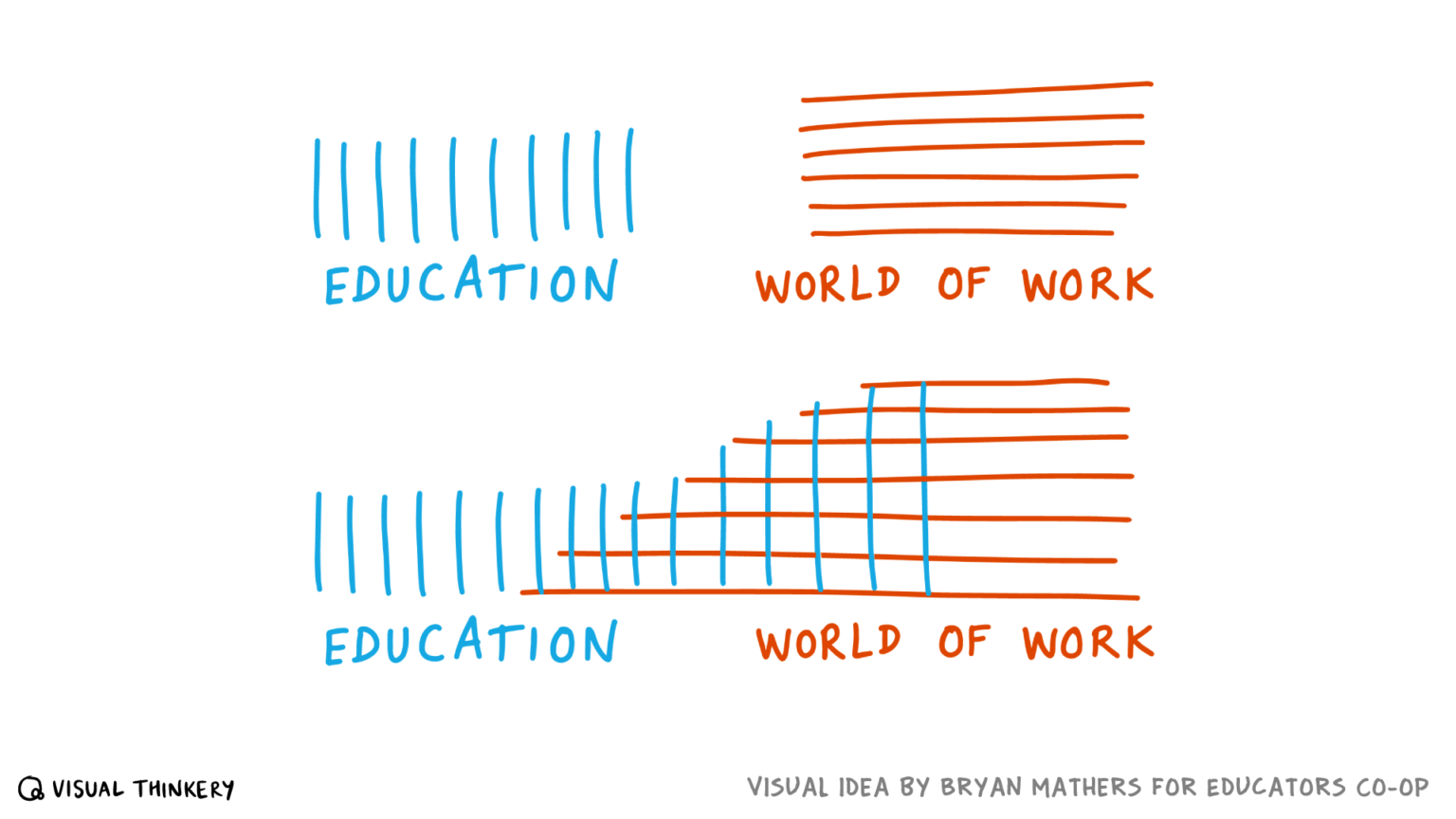
Via Bryan Mathers at https://bryanmmathers.com/education-work/
Z E T T E L K A S T E N N R . 2
example photos of some of Aby Warburg's zettels, kasten, and a photo of his desk space at home with zettelkasten to one side.
/https://tf-cmsv2-smithsonianmag-media.s3.amazonaws.com/filer/20110812093005phyllis-diller-joke-cabinet.jpg)
From this close up photo, it's more obvious that drawer 49 of Diller's gag file (the extension portion) is dedicated to cartoon strips from The Lockhorns.
Photo: Hugh Talman, Smithsonian's National Museum of American History

Photo: Hugh Talman, Smithsonian's National Museum of American History.
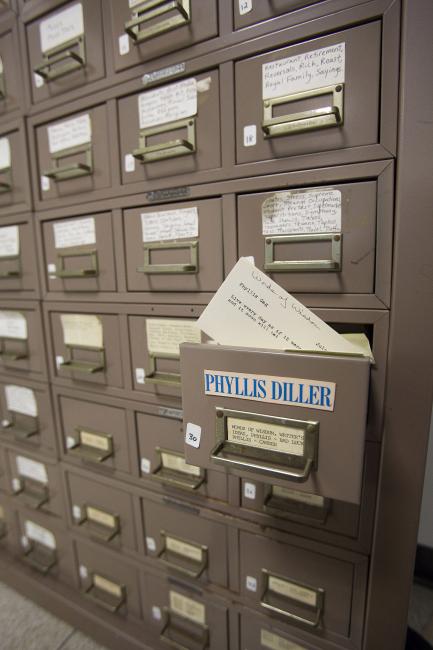
Marijke Ottink working in the archive. “You have to know about all kinds of texts: Roman law and medicine and poetry and prose and history,” she said.Credit...Gordon Welters for The New York Times


via Joan Rivers: A Piece of Work.(Break Thru Films/IFC, 2010)
The same day, Menashe licensed 56 pictures through iStockphoto– for about $1 each.
This is interesting because I feel like the istockphoto company has gotten so many more contributors over the years that the rates have gone down drastically. I attached a website stating how much a person gets paid per photo on average which is a lot less than what the article is saying.
A project of the Roy Rosenzweig Center for History and New Media https://rrchnm.org/portfolio-item/tropy/
Zettel, right
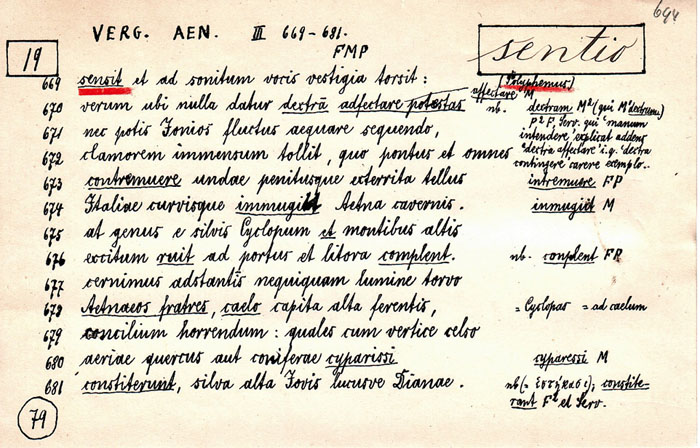
Slip box for the word ‘requiro’ © Adam Gitner
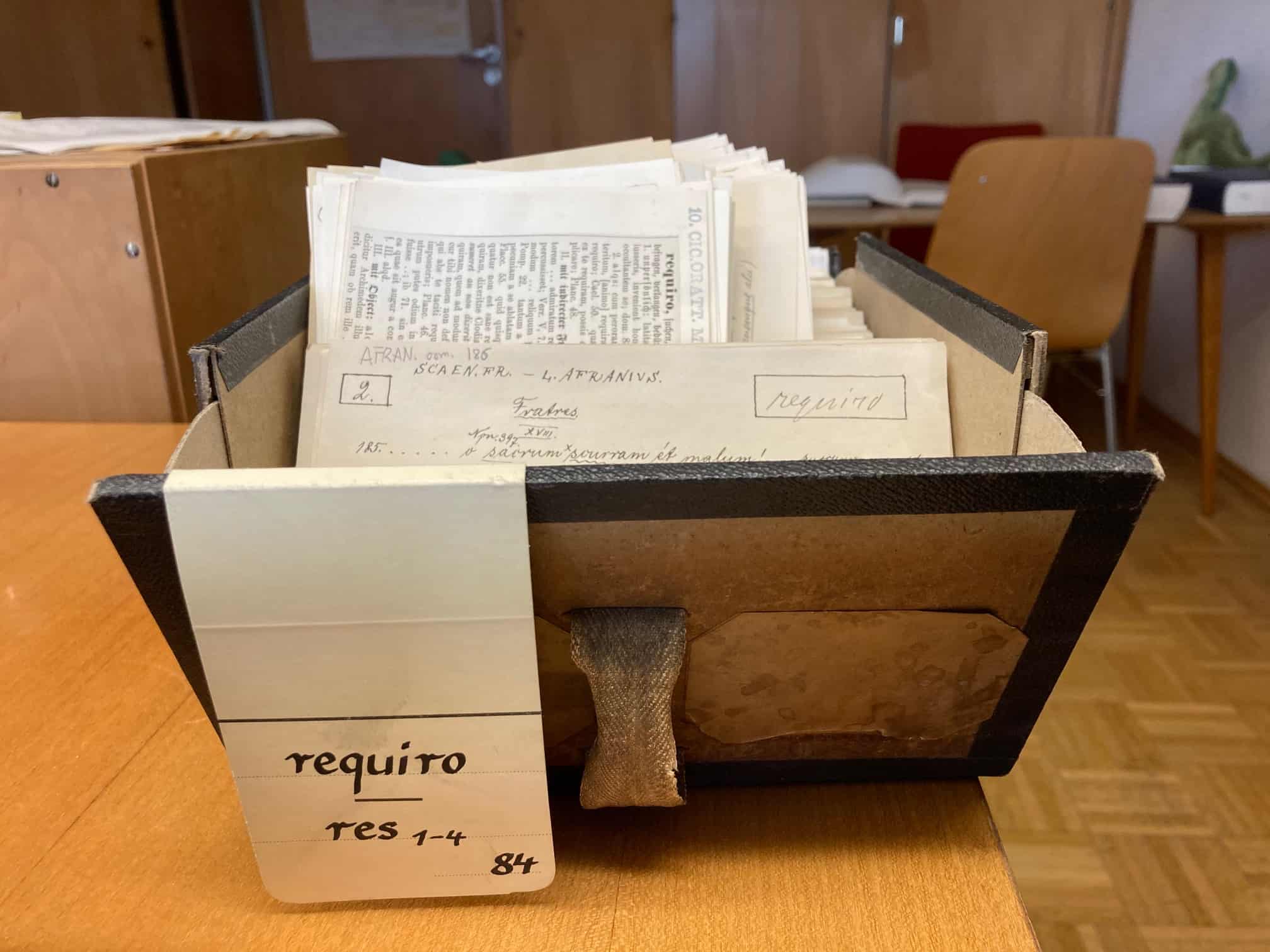
TLL slip archive © Adam Gitner

A sample of the note cards the scholars are using to assemble the comprehensive Latin dictionary. Courtesy of Samuel Beckelhymer. hide caption toggle caption Courtesy of Samuel Beckelhymer.

The archive contains boxes filled with notes on each Latin word. In most cases, the scholars made the notes more than a century ago. Courtesy of Nigel Holmes hide caption toggle caption Courtesy of Nigel Holmes


Stefano Rocchi, a researcher on the Thesaurus Linguae Latinae, the comprehensive Latin dictionary that has been in the works since 1894 in Germany. Researchers are currently working on the letters N and R. They don't expect to finish until around 2050. BAdW/Foto Janina Amendt hide caption toggle caption BAdW/Foto Janina Amendt

I love the fact that the image for "Research & History" here is a six drawer card index!

Memindex Wilson Wood Box 1945-47 Diary file Planner Vintage Secretary
Great photos including one of some of the individual cards.
 (Photo archived into note taking folder as well.)
(Photo archived into note taking folder as well.)
I also have printed photos in my architecture and uniform section. And one or two memes that illustrate points very well 👀
Example of someone who reports printed photos and even memes in their zettelkasten.
Aby Warburg and his son Max Adolph in Warburg's study in Hamburg, 1917. © Warburg Institute, London.
http://www.engramma.it/eOS/index.php?id_articolo=3986
Appears to be a row of slip boxes behind Aby Warburg in this photo of his study in Hamburg from 1917.

Robert Greene’s notecards

Looks kind of like Billy Oppenheimer's box choice is heavily influenced by Robert Greene's.
Yawman & Erbe Manufacturing Company
https://mycompanies.fandom.com/wiki/Yawman_%26_Erbe_Manufacturing_Company
Some fascinating advertisements for Yawman and Erbe
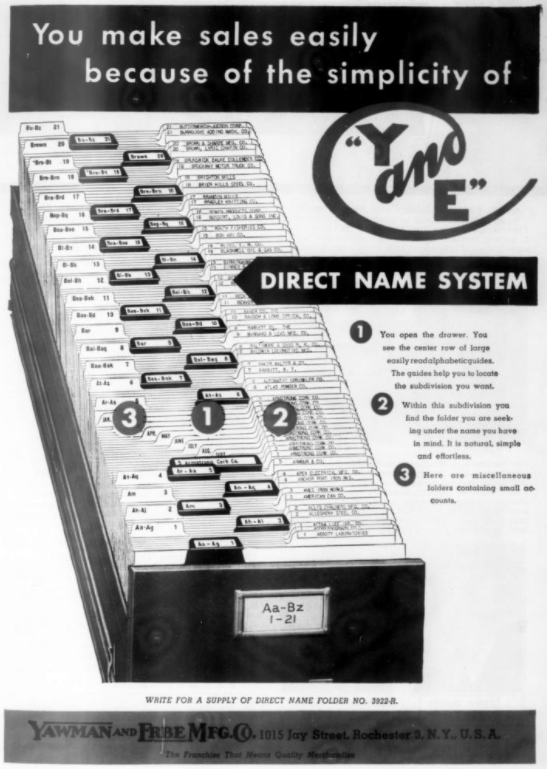
Yawman and Erbe Mfg. Co., - Criminal Identification - 1913<br /> https://scalar.chapman.edu/scalar/ah-331-history-of-photography-spring-2021-compendium/media/yawman-and-erbe-mfg-co---criminal-identification---1913

Zettelkasten in the office of Clement Atlee, former Prime Minister of UK, in The Crown S1E4 "Act of God" (Netflix, 2016)
https://hobohm.edublogs.org/2013/03/15/zettelkasten-maschinen-der-phantasie/
Short blogpost about the Marbach 2013 zettelkasten exhibition with a few photos:
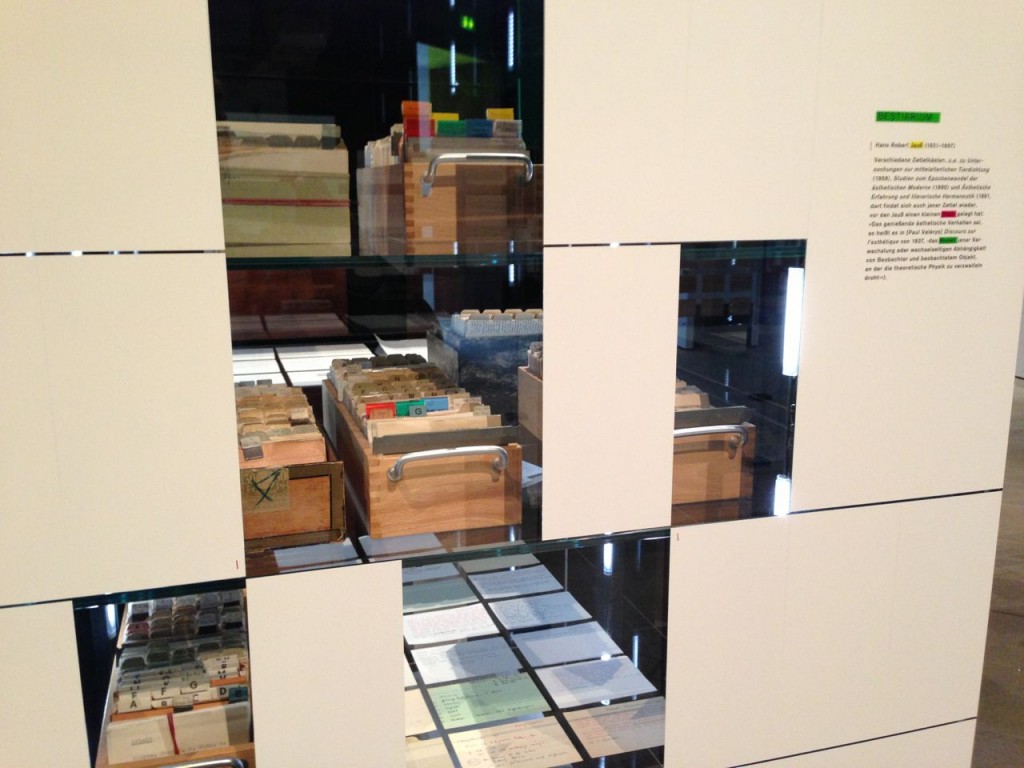
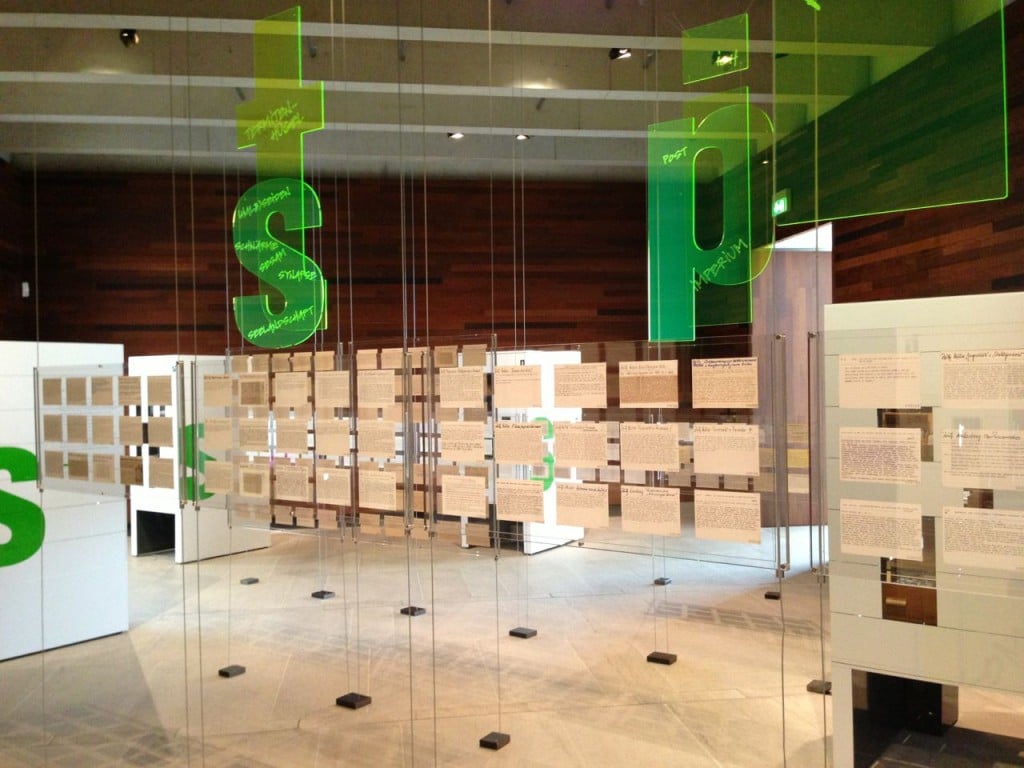
Zettel aus den Kästen des Philosophen Hans Blumenberg Bild: dpa

http://www.greyroom.org/issues/60/20/the-dialectic-of-the-university-his-masters-voice/
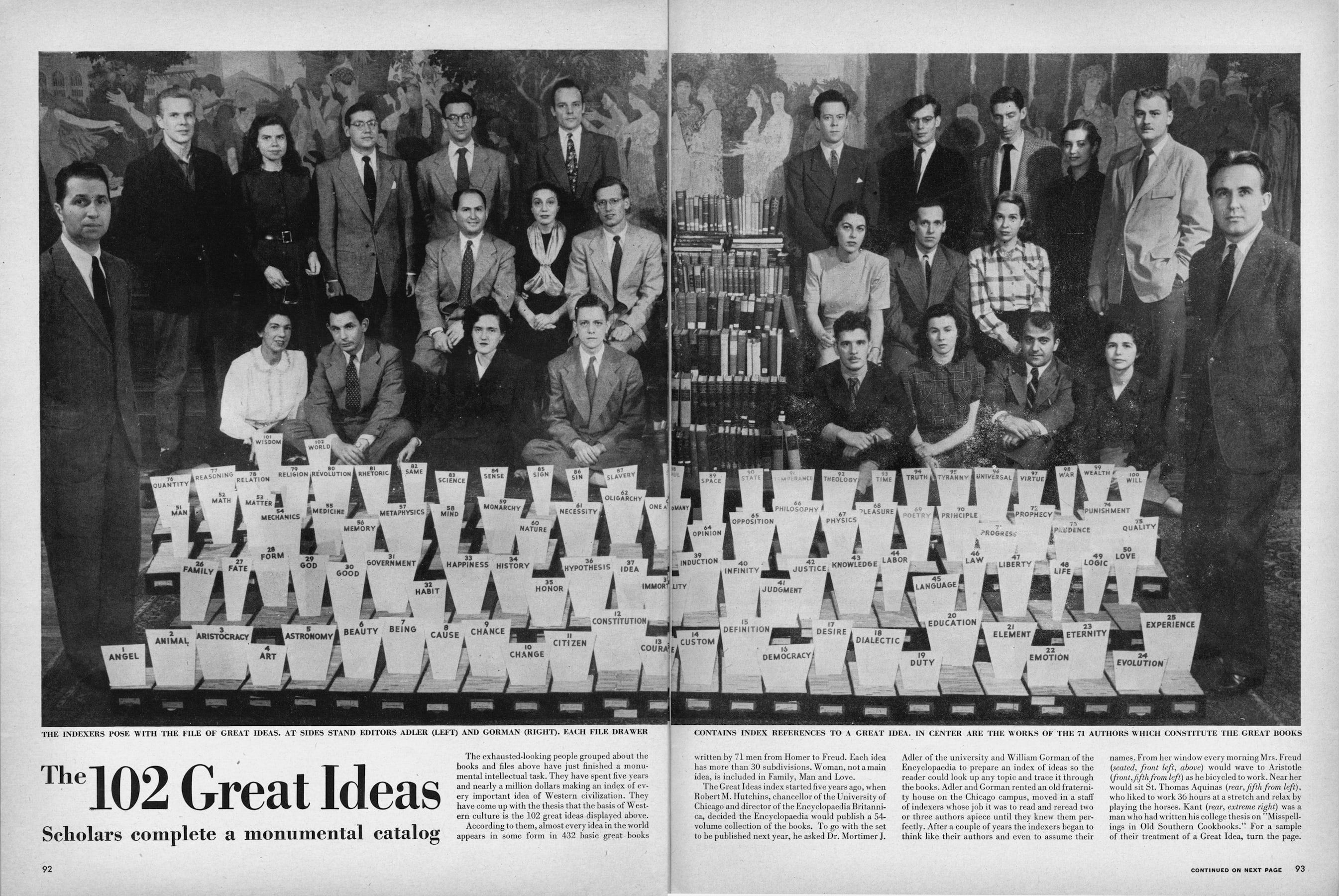 “The Indexers pose with the file of Great Ideas. At sides stand editors [Mortimer] Adler (left) and [William] Gorman (right). Each file drawer contains index references to a Great Idea. In center are the works of the 71 authors which constitute the Great Books.” From “The 102 Great Ideas: Scholars Complete a Monumental Catalog,” Life 24, no. 4 (26 January 1948). Photo: George Skadding.
“The Indexers pose with the file of Great Ideas. At sides stand editors [Mortimer] Adler (left) and [William] Gorman (right). Each file drawer contains index references to a Great Idea. In center are the works of the 71 authors which constitute the Great Books.” From “The 102 Great Ideas: Scholars Complete a Monumental Catalog,” Life 24, no. 4 (26 January 1948). Photo: George Skadding.
Photos from
"The 102 Great Ideas: Scholars Complete a Monumental Catalog," Life, 26 January 1948, 92–3.
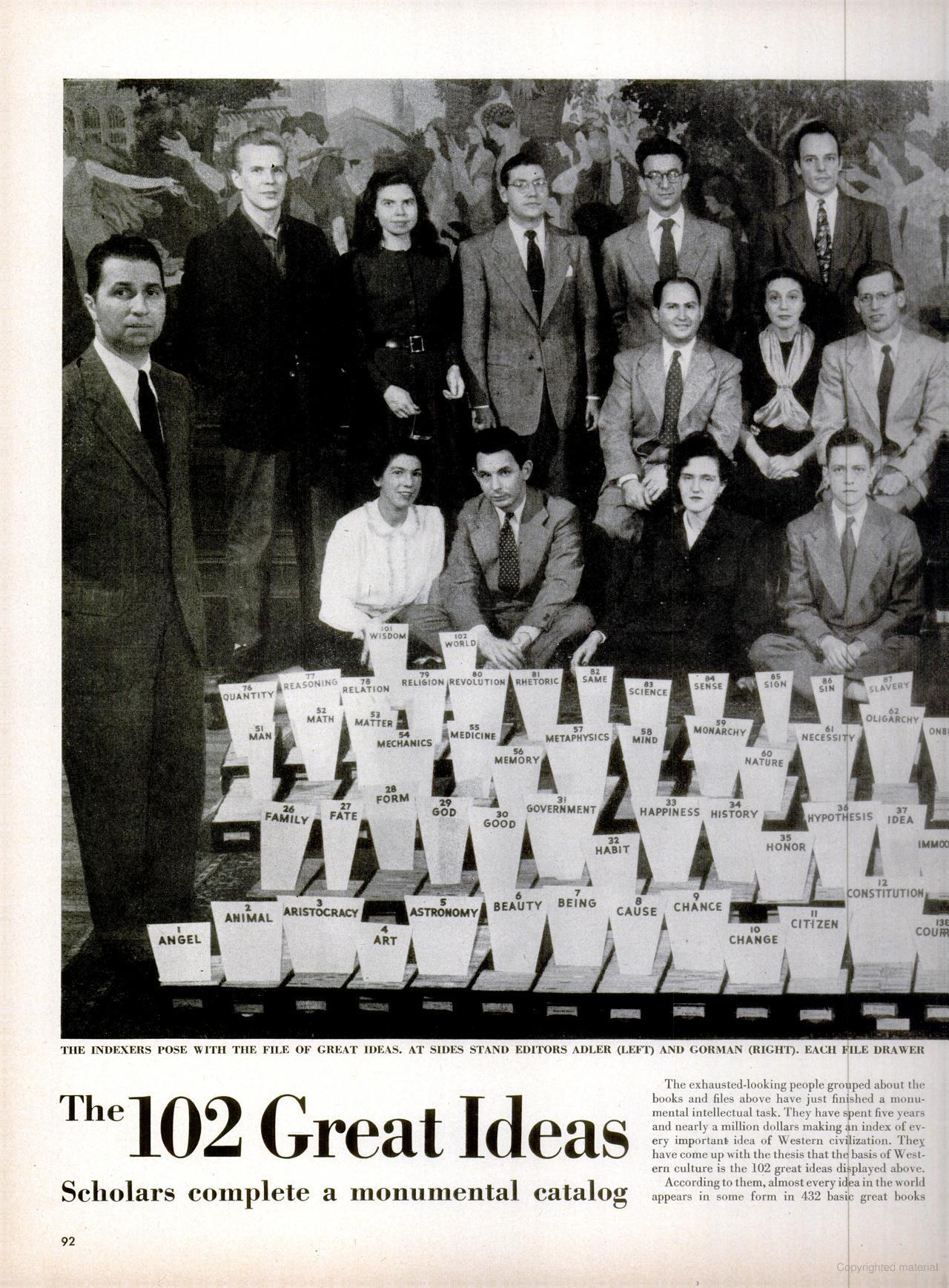
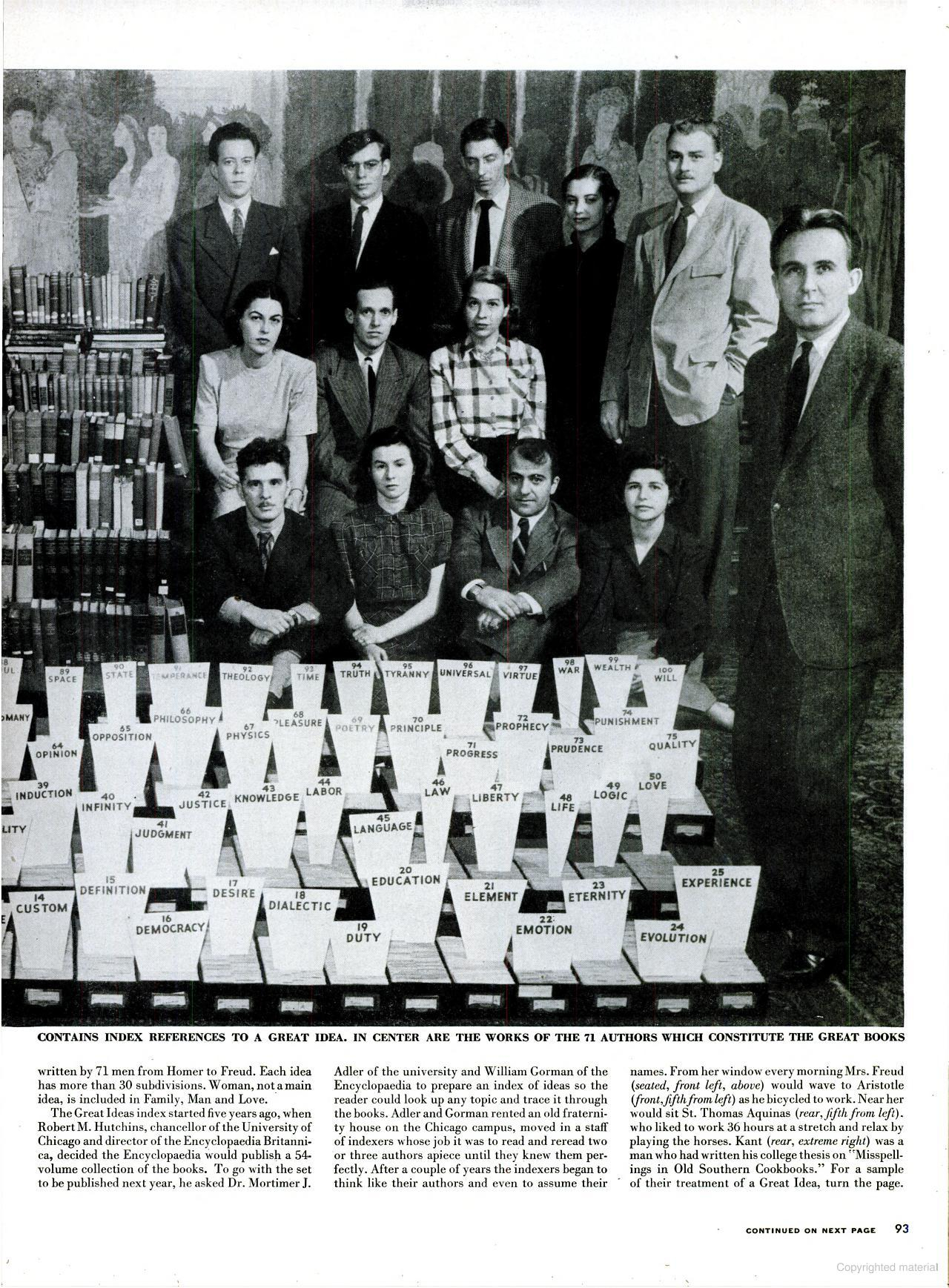
I didn't see/couldn't find this image in the Life archive, but it was obviously contemporanous to the others
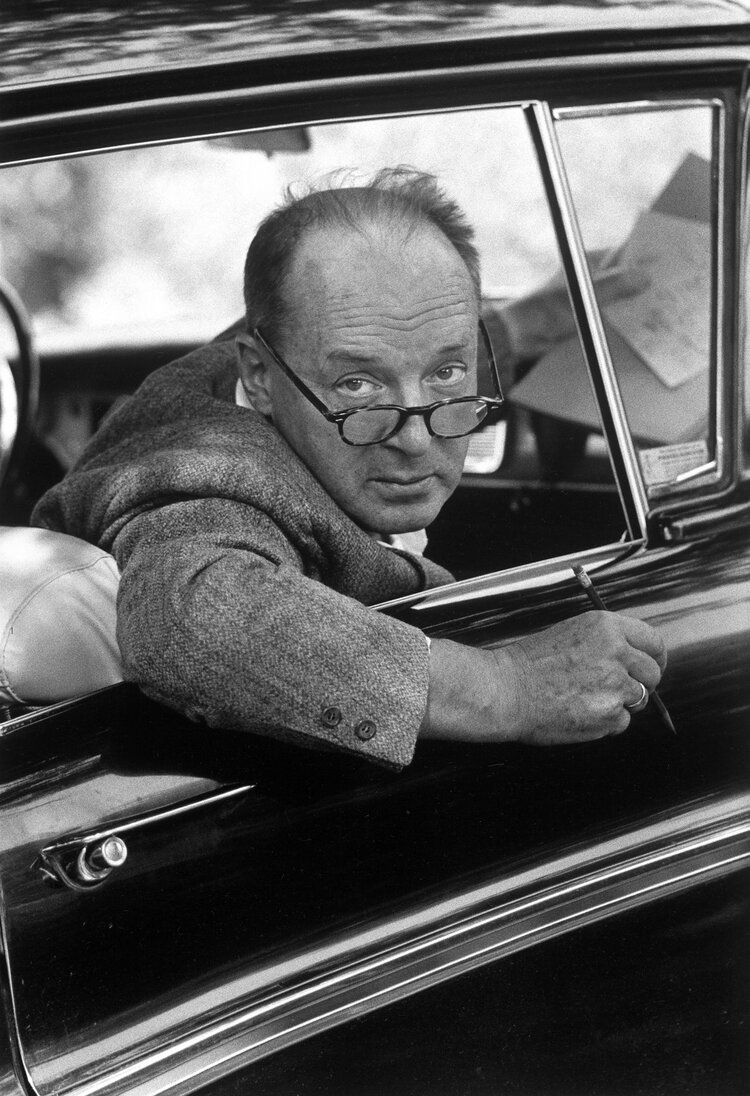
Uladimir Nabokov Ithaca, New YorkDate taken:1958Photographer:Carl Mydans
Uladimir Nabokov Ithaca, New YorkDate taken:1958Photographer:Carl Mydans




Link to: - https://hyp.is/2kNoHPfqEey9RctfgkrEhQ/docs.google.com/document/d/1N4LYLwa2lSq9BizDaJDimOsWY83UMFqqQc1iL2KEpfY/edit This could be an interesting way to implement this idea?
This April 19 image from the Mars helicopter Ingenuity shows the backshell of Perseverance’s landing capsule, its supersonic parachute and the related debris field.Credit...NASA/JPL-Caltech


An alternate view of Roland Barthes, likely taken in his 1963 session with Henri Cartier-Bresson. Index card boxes can be seen on the shelf behind him.
A particular photograph of Roland Barthes has always fascinated me.It is a well-known image, taken by Henri Cartier-Bresson in 1963,around the time of the publication of Barthes’ Sur Racine (OnRacine).

Henri Cartier-Bresson, Roland Barthes, 1963. © PAR79520 Henri CartierBresson/Magnum Photos.
Henri Cartier-Bresson, Roland Barthes, 1963. © PAR79520 Henri CartierBresson/Magnum Photos.
A photo of Roland Barthes from 1963 featured in Picturing Barthes: The Photographic Construction of Authorship (Oxford University Press, 2020) DOI: 10.5871/bacad/9780197266670.003.0007
There appears to be in index card file behind him in the photo, which he may have used for note taking in the mode of a zettelkasten.

link to journal article notes on:
Wilken, Rowan. “The Card Index as Creativity Machine.” Culture Machine 11 (2010): 7–30. https://culturemachine.net/creative-media/
https://www.kapwing.com/settings/account
Set up using my gmail account.
https://david.shanske.com/2021/11/24/5364/
I've been thinking about how to best do photo uploads myself. I've got something quirky right now myself, but want something more solid with less after-the-fact work.
<small><cite class='h-cite via'>ᔥ <span class='p-author h-card'>James Van Dyne</span> in James Van Dyne on Twitter: "VERY fun hack: using lazy loading turbo-frames as a queue in dom. Each row needs to be imported. Frame source is api (returns html) and loads when visible. Scroll the page and one-by-one it imports your images. ZERO JS. #IndieWeb https://t.co/LOk0tq08tO https://t.co/lJ2hh1tDf3" / Twitter (<time class='dt-published'>03/29/2021 15:45:00</time>)</cite></small>
Pixelfed is one of the best privacy respecting and federated alternatives to Instagram. It's great that is also allows posting from a desktop browser.
How do I transfer photos from Android to Mac?
Nice app to transfer photos from Android to Mac
These 39 Sites Have Amazing Stock Photos You Can Use For Free
Lots of good information here.